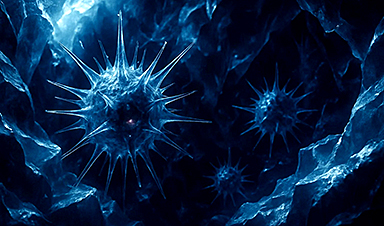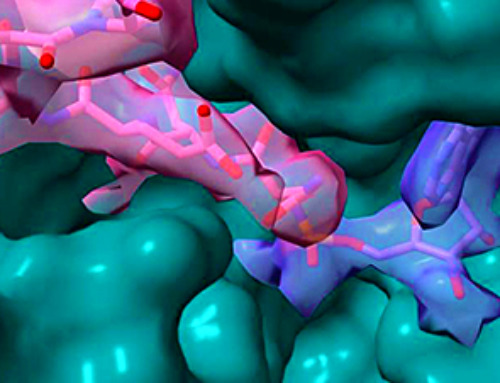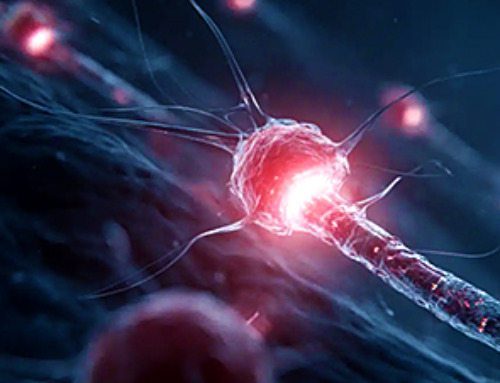Melting Arctic ice increases human and animal interactions, raising the risk of infectious disease spread. Researchers urge early intervention and surveillance.
Climate change is opening new pathways for the spread of infectious diseases such as brucellosis, tularemia, and E. coli in the Arctic, according to a broad international team of scientists with expertise in human, animal, and environmental health in the North Pole.
The researchers published their findings in the journal Science of the Total Environment, showing how melting ice is making new areas accessible for travel and industry, bringing people into closer contact with what were once isolated Arctic ecosystems.
They caution that the thawing of soil that has been frozen for thousands of years could release dormant microbes preserved in the remains of dead animals and other organisms, increasing the risk of disease outbreaks with pandemic potential.

The authors recommend actions “to enhance awareness and management of existing and emerging zoonoses with epidemic and pandemic potential while also focusing on the impacts of various environmental stressors and lifestyle factors on zoonoses in the Arctic.”
Industrial activity and ancient microbes
As the ice in the Arctic melts, more industries and people are flocking to the area, raising the chance for infectious diseases to spread, says Dr. Khaled Megahed Abass of the University of Sharjah and a co-author, stressing that “permafrost thawing could even release ancient bacteria or viruses that have been frozen for thousands of years.”
In their extensive review, the authors analyze scientific studies about and government documents from the Arctic, with a particular focus on Canada, Alaska, Greenland, and Northern Europe.
“The aim of this investigation was to understand what lessons we can learn the past to help Arctic communities better prepare for future health risks,” adds Dr. Abbas. “Climate change and pollution are affecting both animal and human health — our research looked into how these two forces are interconnected. As the Arctic warms faster than most other parts of the world, we’re seeing changes in the environment—like melting permafrost and shifting ecosystems—that could help spread infectious diseases between animals and people.”
Zoonotic pathogens and permafrost thaw
In scientific jargon, these diseases are called zoonotic pathogens with the ability to jump from wildlife to humans, especially when human activities and animal habitats overlap in a manner upsetting environmental balance. The pathogens may be parasitic, viral, or bacterial. They can include unconventional agents with the ability to spread to humans through different means like water food or the environment.
Climate change is blamed for the erratic and long-term shifts in the Earth’s weather and temperature with scientists reporting a world that has been warming up quickly in the past decades.

The Earth’s warming is behind the permafrost thaw – a process which refers to the melting of the ice in the frosty soil of Arctic regions. A thawing permafrost can have grave consequences on the environment and the inhabitants as the frozen soil melts.
The study is an extensive review of the literature and government documents from the North Pole in which a broad international consortium of scientists with a wide range of expertise “describe a selection of case studies highlighting the importance of a One Health approach to zoonoses in the circumarctic, encompassing human health, animal health, and environmental health aspects,” the authors write.
One health approach and global warning
The significance of the study emerges from the authors’ adoption of and reliance on the One Health approach in analyzing previous literature and government reports documenting transformations taking place in the Arctic due to climate change.
In their extensive review, they attempt to sustainably balance and optimize the health of ecosystems in the Arctic, recognizing that health issues, whether related to people, animals, plants, or the environment, are closely linked and interdependent.

The study, according to Abass, shows that “local communities and researchers have already noticed signs of these changes, and some are adapting—but many risks are still poorly understood.”
Dr. Abass warns that what is happening “in the Arctic doesn’t stay in the Arctic. The environmental stressors we studied have ripple effects that reach far beyond the polar regions.
Urgent need for surveillance and cooperation
“Climate change is not only melting ice—it’s melting the barriers between ecosystems, animals, and people. This study shows how environmental disruption can directly impact human health.”
The authors reaffirm the need to “enhance awareness and manage Arctic zoonoses with pandemic potential,” underscoring the fact that “about three-quarters of all known human infectious diseases are zoonotic including Arctic ones” at a time “pollution, climate change and biodiversity loss aggravate zoonoses transmission in the Arctic.”
They write, “The cases highlight critical gaps in monitoring and current knowledge, focusing on environmental stressors and lifestyle factors, and they are examples of current occurrences in the Arctic that inform on critically needed actions to prepare us for the future.”

Dr. Abass says he and colleagues authoring the study are upbeat about the interest their project has already generated. “This research has attracted interest from outside academia. Public health organizations, environmental agencies, and even northern industries (like mining and shipping) are starting to recognize the need to monitor health risks linked to changing Arctic conditions. This includes policymakers concerned about pandemic prevention and food safety in remote areas.”
The authors see their comprehensive review as a warning for “governments and communities to take action early—before outbreaks occur. It supports the development of better disease surveillance, more robust environmental monitoring, and climate-resilient public health systems. The study also shows the importance of indigenous knowledge in detecting early signs of ecosystem and health changes.”
The study highlights the importance of international cooperation coupled with transdisciplinary research collaboration. The fact that the findings stem from an international consortium involving over 15 institutions across Europe and Canada, notes Dr. Abass, is a sign “of the significance of multidirectional knowledge exchange, thematic networks and internationalization in addressing climate change issues in the Arctic.”
Reference: “Environmental stressors and zoonoses in the Arctic: Learning from the past to prepare for the future” by Emilie Andersen-Ranberg, Ingebjørg H. Nymo, Pikka Jokelainen, Anastasia Emelyanova, Solveig Jore, Brian Laird, Rebecca K. Davidson, Sonja Ostertag, Emilie Bouchard, Freja Fagerholm, Kelly Skinner, Mario Acquarone, Morten Tryland, Rune Dietz, Khaled Abass, Arja Rautio, Sjúrður Hammer, Birgitta Evengård, Tomas Thierfelder, Raphaela Stimmelmayr and Christian Sonne, 17 October 2024, Science of The Total Environment.
DOI: 10.1016/j.scitotenv.2024.176869
News
Team finds flawed data in recent study relevant to coronavirus antiviral development
The COVID pandemic illustrated how urgently we need antiviral medications capable of treating coronavirus infections. To aid this effort, researchers quickly homed in on part of SARS-CoV-2's molecular structure known as the NiRAN domain—an [...]
Drug-Coated Neural Implants Reduce Immune Rejection
Summary: A new study shows that coating neural prosthetic implants with the anti-inflammatory drug dexamethasone helps reduce the body’s immune response and scar tissue formation. This strategy enhances the long-term performance and stability of electrodes [...]
Scientists discover cancer-fighting bacteria that ‘soak up’ forever chemicals in the body
A family of healthy bacteria may help 'soak up' toxic forever chemicals in the body, warding off their cancerous effects. Forever chemicals, also known as PFAS (per- and polyfluoroalkyl substances), are toxic chemicals that [...]
Johns Hopkins Researchers Uncover a New Way To Kill Cancer Cells
A new study reveals that blocking ribosomal RNA production rewires cancer cell behavior and could help treat genetically unstable tumors. Researchers at the Johns Hopkins Kimmel Cancer Center and the Department of Radiation Oncology and Molecular [...]
AI matches doctors in mapping lung tumors for radiation therapy
In radiation therapy, precision can save lives. Oncologists must carefully map the size and location of a tumor before delivering high-dose radiation to destroy cancer cells while sparing healthy tissue. But this process, called [...]
Scientists Finally “See” Key Protein That Controls Inflammation
Researchers used advanced microscopy to uncover important protein structures. For the first time, two important protein structures in the human body are being visualized, thanks in part to cutting-edge technology at the University of [...]
AI tool detects 9 types of dementia from a single brain scan
Mayo Clinic researchers have developed a new artificial intelligence (AI) tool that helps clinicians identify brain activity patterns linked to nine types of dementia, including Alzheimer's disease, using a single, widely available scan—a transformative [...]
Is plastic packaging putting more than just food on your plate?
New research reveals that common food packaging and utensils can shed microscopic plastics into our food, prompting urgent calls for stricter testing and updated regulations to protect public health. Beyond microplastics: The analysis intentionally [...]
Aging Spreads Through the Bloodstream
Summary: New research reveals that aging isn’t just a local cellular process—it can spread throughout the body via the bloodstream. A redox-sensitive protein called ReHMGB1, secreted by senescent cells, was found to trigger aging features [...]
AI and nanomedicine find rare biomarkers for prostrate cancer and atherosclerosis
Imagine a stadium packed with 75,000 fans, all wearing green and white jerseys—except one person in a solid green shirt. Finding that person would be tough. That's how hard it is for scientists to [...]
Are Pesticides Breeding the Next Pandemic? Experts Warn of Fungal Superbugs
Fungicides used in agriculture have been linked to an increase in resistance to antifungal drugs in both humans and animals. Fungal infections are on the rise, and two UC Davis infectious disease experts, Dr. George Thompson [...]
Scientists Crack the 500-Million-Year-Old Code That Controls Your Immune System
A collaborative team from Penn Medicine and Penn Engineering has uncovered the mathematical principles behind a 500-million-year-old protein network that determines whether foreign materials are recognized as friend or foe. How does your body [...]
Team discovers how tiny parts of cells stay organized, new insights for blocking cancer growth
A team of international researchers led by scientists at City of Hope provides the most thorough account yet of an elusive target for cancer treatment. Published in Science Advances, the study suggests a complex signaling [...]
Nanomaterials in Ophthalmology: A Review
Eye diseases are becoming more common. In 2020, over 250 million people had mild vision problems, and 295 million experienced moderate to severe ocular conditions. In response, researchers are turning to nanotechnology and nanomaterials—tools that are transforming [...]
Natural Plant Extract Removes up to 90% of Microplastics From Water
Researchers found that natural polymers derived from okra and fenugreek are highly effective at removing microplastics from water. The same sticky substances that make okra slimy and give fenugreek its gel-like texture could help [...]
Instant coffee may damage your eyes, genetic study finds
A new genetic study shows that just one extra cup of instant coffee a day could significantly increase your risk of developing dry AMD, shedding fresh light on how our daily beverage choices may [...]





















